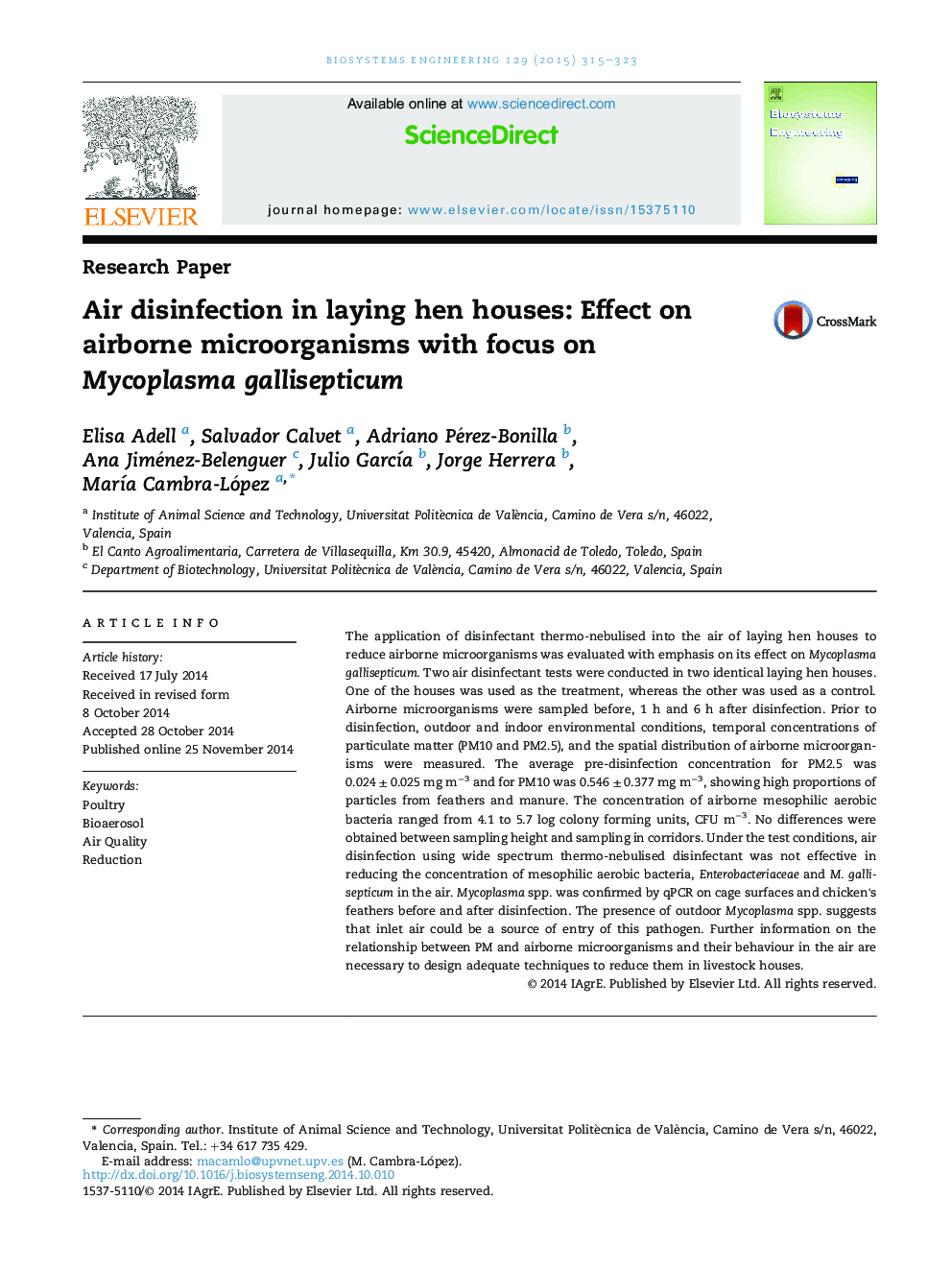| Article ID | Journal | Published Year | Pages | File Type |
|---|---|---|---|---|
| 1711075 | Biosystems Engineering | 2015 | 9 Pages |
•Temporal and spatial airborne pollutants were evaluated in a laying hen house.•Air disinfection was not effective in reducing airborne bacteria or Mycoplasma spp.•Inlet air could be a source of entry of Mycoplasma spp.
The application of disinfectant thermo-nebulised into the air of laying hen houses to reduce airborne microorganisms was evaluated with emphasis on its effect on Mycoplasma gallisepticum. Two air disinfectant tests were conducted in two identical laying hen houses. One of the houses was used as the treatment, whereas the other was used as a control. Airborne microorganisms were sampled before, 1 h and 6 h after disinfection. Prior to disinfection, outdoor and indoor environmental conditions, temporal concentrations of particulate matter (PM10 and PM2.5), and the spatial distribution of airborne microorganisms were measured. The average pre-disinfection concentration for PM2.5 was 0.024 ± 0.025 mg m−3 and for PM10 was 0.546 ± 0.377 mg m−3, showing high proportions of particles from feathers and manure. The concentration of airborne mesophilic aerobic bacteria ranged from 4.1 to 5.7 log colony forming units, CFU m−3. No differences were obtained between sampling height and sampling in corridors. Under the test conditions, air disinfection using wide spectrum thermo-nebulised disinfectant was not effective in reducing the concentration of mesophilic aerobic bacteria, Enterobacteriaceae and M. gallisepticum in the air. Mycoplasma spp. was confirmed by qPCR on cage surfaces and chicken's feathers before and after disinfection. The presence of outdoor Mycoplasma spp. suggests that inlet air could be a source of entry of this pathogen. Further information on the relationship between PM and airborne microorganisms and their behaviour in the air are necessary to design adequate techniques to reduce them in livestock houses.
